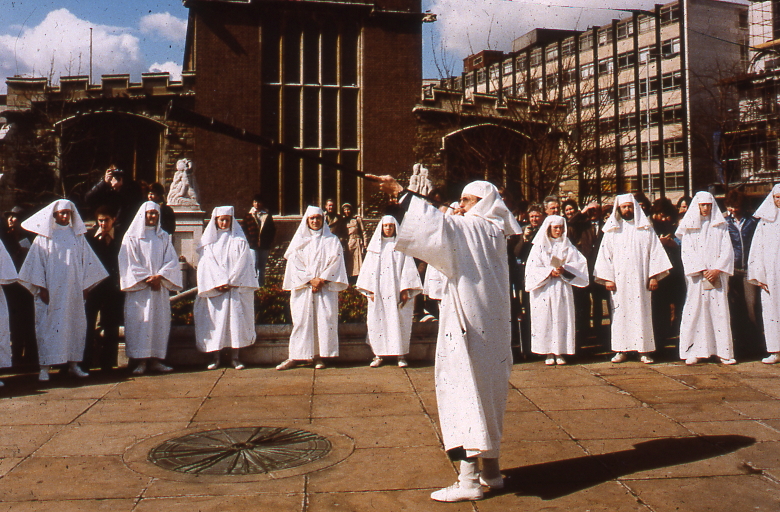
Cloten Scene III Cymberline
Arise, O Sun!
Let the Darkness of Night
Fade before the beams of your glorious Radiance
Midsummer, astronomically, is 21st June. So, summer has started. But, meteorologically speaking it has been here since the beginning of June.
In Christian London celebrations were at their height on the Church’s Midsummer’s Day, 24th June, on the Vigil and Day of St John the Baptist (23rd, 24th June). Stow points the way:
‘every mans doore being shadowed with greene Birch, long Fennel, Saint John wort, Orpin, white Lillies, and such like, garnished upon with Garlands of beautiful flowers, had also Lampes of glasse, with oyle burning in them all the night, some hung out braunches of yron curiously wrought, contayning hundreds of Lampes, light at once, which made a goodly shew, namely in new Fishstreet, Thames Streets, &c’
Survey of London, John Stow
Bonfires from the night before were smouldering, where the ‘wealthier sort’ set out tables, furnished with ‘sweete beade and drinks plentifully’ where ordinary people could rub shoulders with the rich and ‘be merrie with them in great familiaritie’. There were large processions of ‘Captains, Lieutenants, Sergeants, Corporals, &c Wilfers, Drummers, and Fifes, ….Ensign bearers, Sword Players, Trumpeters on horseback, … Gunners, …. Archers, …Pike Men, ….Pageants, and, poor people in straw hats holding cresset lamps to make a show in exchange for a wage. All accompanying the Lord Mayor, Sheriffs each with their own Giants, Henchmen and Pageants from the Little Conduit in Cheape to Aldgate, and back via Fenchurch Street.
Midsummer was a mix of May Day, Halloween and a street festival with ‘Robin Hood games’, bale fires, the ‘summer pole’ dancing, merriment and pervading sense of the uncanny.
First published in 2022, revised and reposted in June 2024




 oval were completed in 1812 at a personal cost to Lord Elgin, of £70,000. The marbles were bought by the British Government in 1816 for £35,000 and placed in the British Museum.
oval were completed in 1812 at a personal cost to Lord Elgin, of £70,000. The marbles were bought by the British Government in 1816 for £35,000 and placed in the British Museum.
